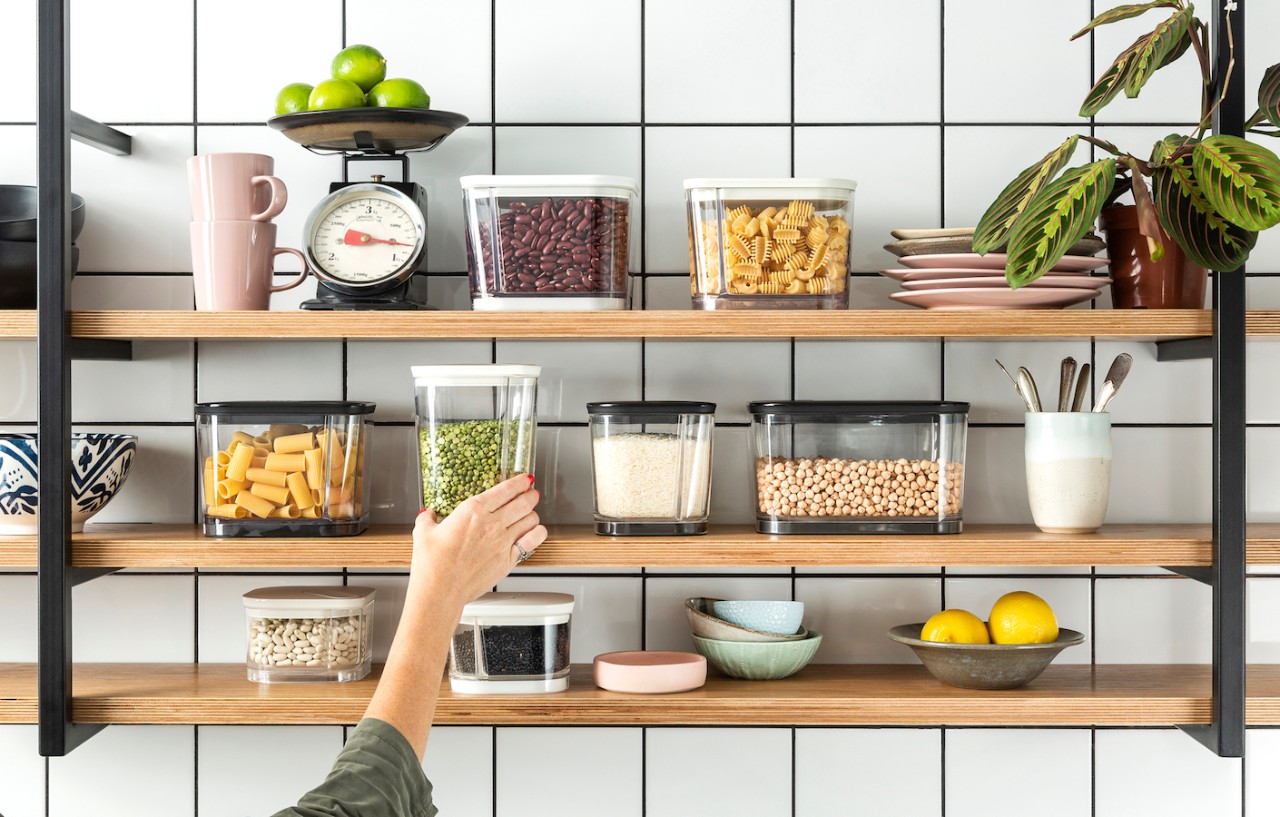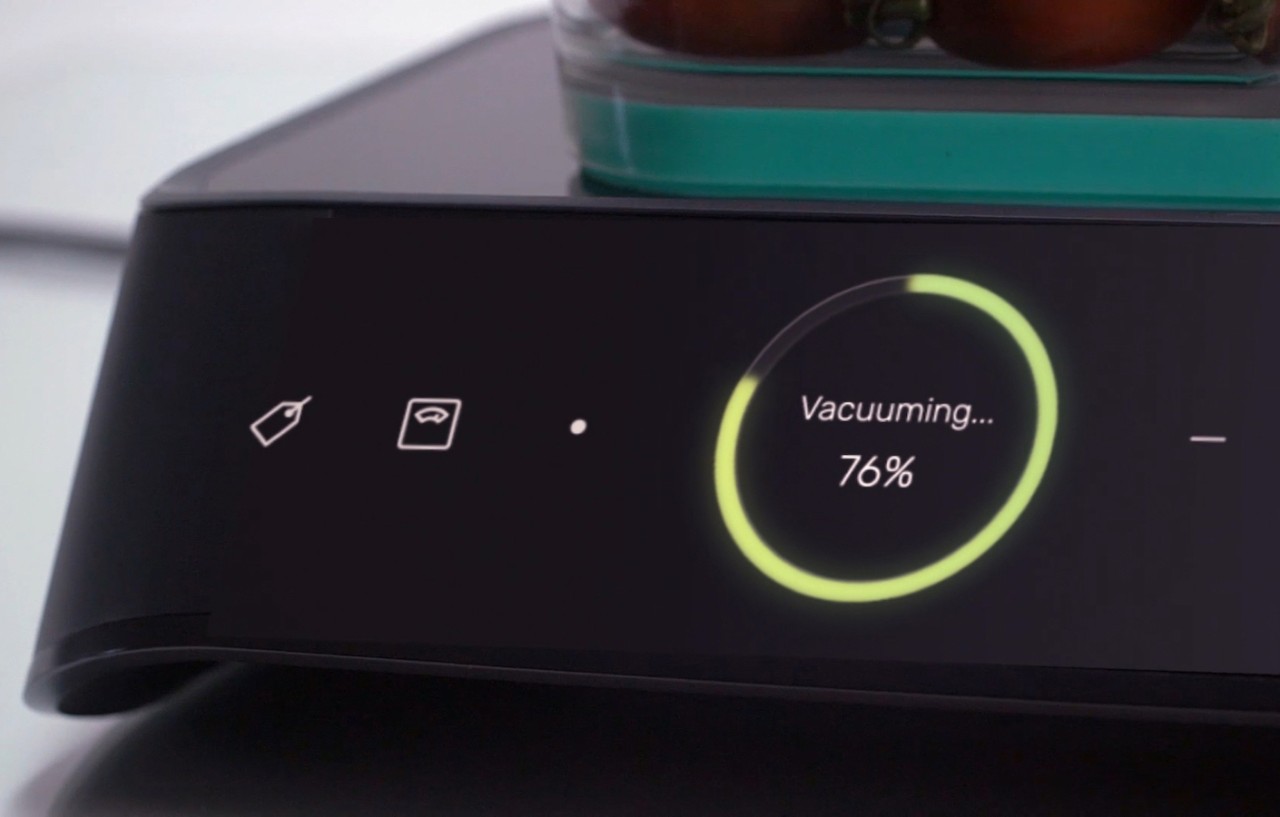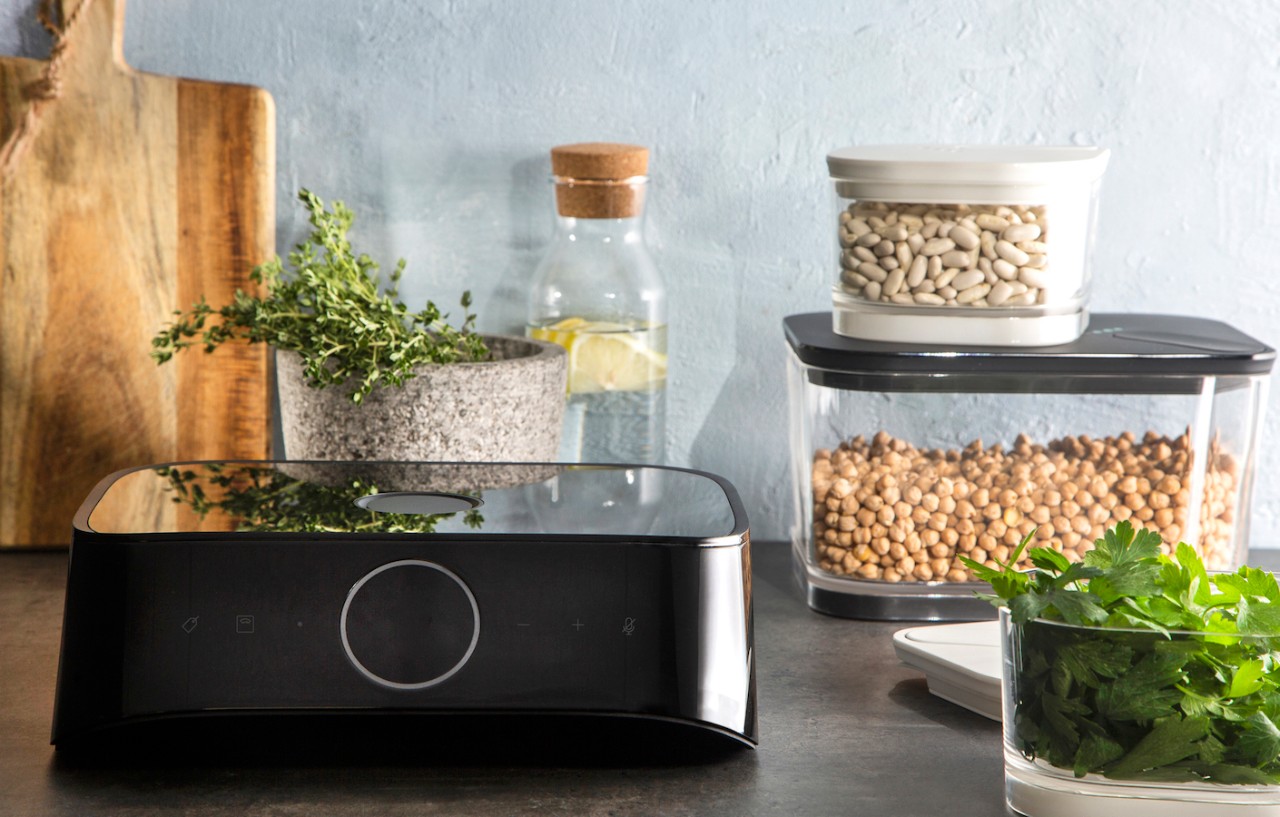How one company is combating food waste through intelligent containers
The Future Laboratory speaks with Tal Lapidot, CEO of Silo on how his company’s vacuum-seal storage system will change the way we interact with food in the home.
Consumers in the UK throw away 7.1 million tonnes of food per year while Americans throw away one pound of food per person each day (sources: WRAP; The Guardian). But Silo, wants to tackle the world’s food waste problem by rethinking how we store it.

Silo is a countertop, foldable vacuum appliance and set of food-safe containers, which have special airways built into their sides. Place a container on the base and it automatically vacuums all the air out through its patented airway system. Silo also has Alexa built-in and is linked to an app, so that users can tell Alexa exactly what is in each container and receive estimated expirations dates and reminders of when food needs to be eaten. At a time when consumers are confused by ‘best-before’, ‘use-by’ and ‘once opened’ dates on food labels, Silo offers a seamless solution to an everyday problem – how to get the most out of the food in your fridge, without having to think too much about it.
In our conversation with founder Tal Lapidot, we discuss the need to reinvent food storage, how convenience can act as a positive enabler of sustainability and how Silo might change our relationship to food shopping in the future.
What was the moment that led you to invent Silo?
Silo was born through a moment we all share: when you open your fridge and food that was forgotten or passed its prime is thrown away. For me, it was a moldy box of overly expensive cherry tomatoes that galvanized me to action. I started looking for an off-the-shelf solution and settled on vacuum storage because of its proven benefits, however, I couldn’t find a product that I felt I could actually use on a daily basis. Existing solutions felt cumbersome and not adaptable to our modern lifestyle; I knew they would die in my gadget drawer. I wanted a tool, not a gadget and I couldn’t find it, so being an engineer, I decided to make one of my own.

Why did you choose to make Silo smart and Alexa-enabled, as opposed to simply a vacuum-packing system?
Silo is designed to extend freshness and let you enjoy your food longer. With that said, we realised early on that vacuum packing alone is not a sufficient solution. You see, people have no intuition for the shelf life of food in vacuum, and providing a pamphlet with shelf life recommendations is not enough. No one has time to manually label each container and, let’s face it, most of us forget what we put in the fridge last week. In order to provide a truly holistic solution, we needed to provide a convenient way to help you manage your food, let you know if it’s fresh, and remind you to consume it before it goes bad.
The Alexa component came later when we were struggling to figure out how to tag the food without compromising the user experience. Picture yourself in your kitchen: your hands are full because you’re prepping food and cooking a meal and your smartphone is not always at hand, using your voice for food tagging solved this major issue. Now, for example, you just say “strawberries” at the end of the process, and your strawberries are tagged and managed by Silo. And for any other queries you may have, what is more simple than to ask “Alexa, is the chicken still OK?”
How does Silo improve upon ‘use-by’ and expiry dates?
When you buy a pack of chips, it usually has a very long expiration date, but the moment you open the bag, that expiration date loses all meaning and the chips go stale within a few days. This is because food that is packed on an industrial packing machine is packed in a modified atmosphere, giving it an optimal shelf life that can be estimated as the use-by date, all under the assumption that it would be consumed wholly upon opening. Silo is there for when that package is opened and not fully consumed, and the use-by date is no longer relevant.
Silo is for your fresh produce that has no use-by date or for your home cooked food that you would keep in a regular container. By removing most of the oxygen, it slows down food spoilage that is mainly caused by oxidation and bacteria, giving you between two to five times longer to enjoy your food. It brings some of that industrial storage magic back to the kitchen.
Was the invention of Silo mainly about reducing food waste and sustainability or about convenience?
Convenience is a means to an end but not the purpose. Silo was designed to sustain your food. However, we know we can’t get there without being honest about what’s important to consumers; their time. Throughout the design process, we were not willing to compromise convenience no matter how hard it was. We challenge ourselves every day to make technology that fits seamlessly into people's lives, rather than try to force a change of habit just to fit our new technology. Sustainability is our North Star, but if we compromise on convenience, in our view, we will never get there.

What is your vision for how Silo could help manage our eating habits?
We see Silo becoming an integral part of the home kitchen and increasing its usefulness by allowing consumers to be more deliberate about their buying and eating habits.
Today as it stands, we have no insight into our buying, eating and waste habits. How can we fix something when we don’t know where the problem is? By integrating a convenient in-home solution for extending food shelf life and tracking contents, we are giving users more knowledge that can eventually redefine their kitchen experience. With enough consumption data, we can track household and even individual nutrition. With enough inventory data, we can provide optimized recipes based on stock and dietary needs.
Currently it requires an immense time commitment to manage the kitchen, and because we have never known anything else we don’t think twice about it, but the kitchen of the future will manage itself: it will order the right amount of commonly consumed foods, deliver them just in time, and automatically change order amounts based on how consumption changes over time. While today, we plan to help give insight into the kitchen, tomorrow we plan to automate the tedious parts of the kitchen away, leaving people time to focus on the best part, enjoying their food!
Is there an opportunity for Silo to also communicate the provenance of food?
Food transparency is naturally a part of Silo’s vision, granted we provide transparency into shelf life and freshness. For the things we can’t track directly, like provenance, we are looking into ways to integrate 3rd party data sets to provide users with more insight into their meals, going so far as to notify them of bad ingredients in case there is news of an outbreak at sources their ingredients came from. We are actively looking into distributed ledger technology like Blockchain, but are not making it a focus as it is still very early in its adoption cycle and will require time to become a reliable source of data.
How do you think smart storage systems like Silo might affect the way we shop for food in the next five or ten years?
The better we get at tracking our inventory the better we get at how we shop for it. With online grocery becoming more and more common, logistics services get more efficient and cheaper, we are heading into a future where a major portion of our kitchen stock will be autonomously replenished. Our focus will be on how we pre-define what we want to have immediately available (not if it is in stock or not), what type of meals we want to cook and how our general health is affected by our consumption choices. For some of it, you won't have to wait five years, Silo, for example, will help you keep track of how much you consume of items stored in Silo, so you would know when to buy more and, more importantly, how much to buy.
Ultimately, we think that in five to 10 years, the interaction with your kitchen will be fundamentally different. Instead of investing time into managing your kitchen/inventory, it will manage itself. Users will be able to control the nutritional balance of foods delivered to their home, and the costs associated with the orders, all from voice commands or a smartphone. If you look at history, people used to go to the market every day for food. With advancements in technology, people now go on average once a week. We plan to continue that trend and make trips to the grocery store a luxury instead of a necessity.
Silo ran a successful Kickstarter campaign in October 2018 and will launch its product in early 2020. For more information on Silo, click here.
Avery Dennison M_use Notes by Amy White
As food wastage is such a significant challenge for producers, retailers, consumers and our environment, Avery Dennison has been focussed on innovating intelligent labelling solutions that provide traceability and reduce food wastage for over 10 years.
In food pilots that Avery Dennison recently completed, the preliminary analysis points to a 20 percent reduction in food waste, across the supply chain and in store. Furthermore, it allows a significant reduction in the stock management process, with up to 50 percent reduction in labor costs as retailers know what they have and where they have it. If something has been wrongly positioned, or not pushed from back to front, it allows them to take action, to mark items down or to make sure they get redirected to someone else that can make good use of them.
To ensure that RFID is safe for consumers, in 2019 Avery Dennison unveiled Wavesafe the first UHF RFID tag solution that is suitable for microwave use. The first microwave safe UHF RFID label uses AD25Xr6-P designed specifically for the food industry, avoiding arcing or excessive heating when used as recommended if subjected to a microwave environment, enabling food safety, compliance, high performance item-level tracking.
Sensor technologies, such as Avery Dennison’s TT Sensor Plus, can record whether produce has been compromised during the supply chain by recording temperature over time, providing even further insight for smart storage devices.
Avery Dennison recently expanded their Janela™ Smart Products Platform outside of apparel and footwear, in partnership with Everledger for the wine and spirits segment. This partnership, launching first with ‘Appellation Earth’ wines from Napa Valley by US-based wine négociant Wine Trade Network, combines Avery Dennison’s intelligent label solutions with Everledger’s blockchain-based platform. Watch a short movie of our collaboration here.








